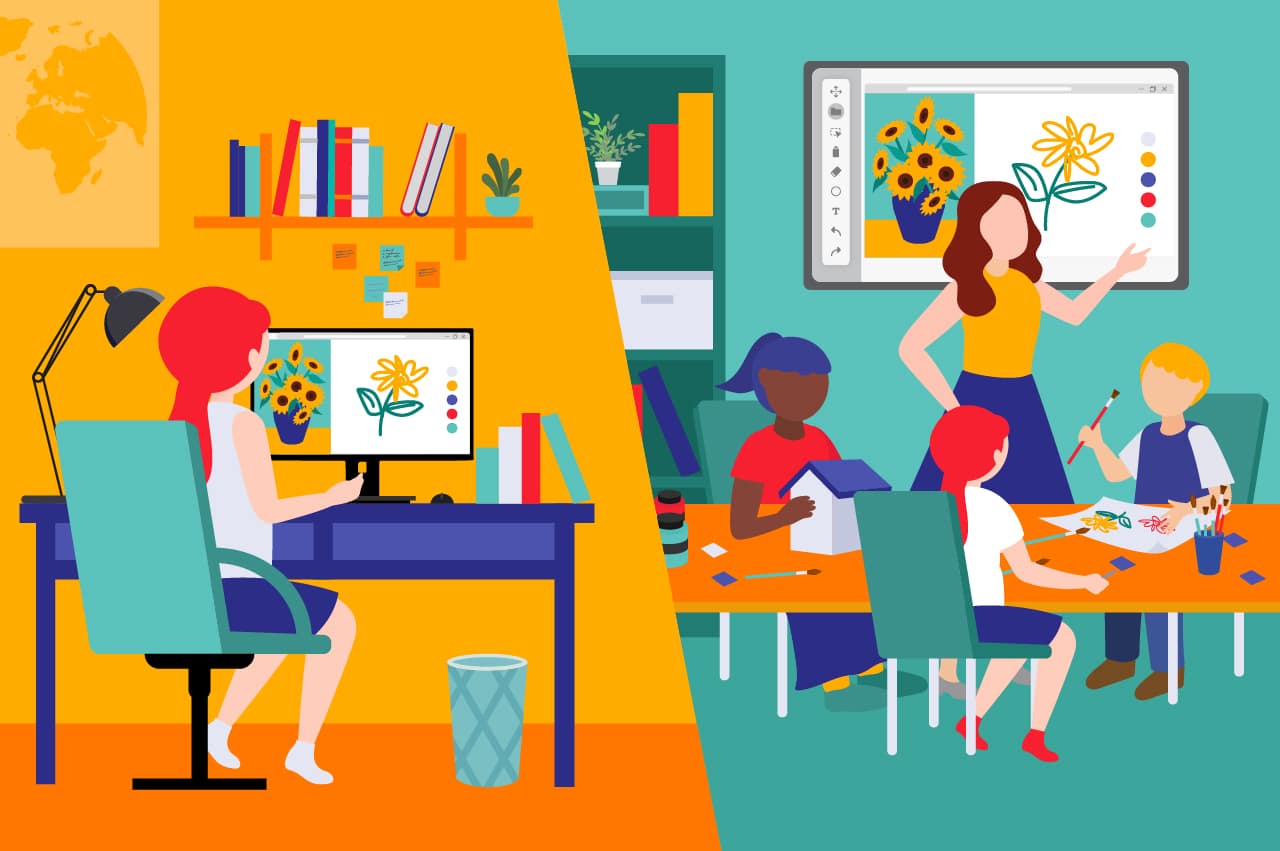
Flipped Classrooms:
- A New Teaching Paradigm
Imagine walking into a classroom where the roles of teacher and student are transformed. Instead of sitting through lectures, students actively engage with materials at their own pace before stepping foot in class. This innovative approach is called the flipped classroom model, and it’s revolutionizing the way we think about education. Gone are the days of monotonous note-taking; welcome to a new paradigm where collaboration, creativity, and critical thinking take center stage.
Are you ready to explore how this teaching method can reshape learning experiences? Let’s dive into what makes flipped classrooms an exciting frontier in education today!

What is a Flipped Classroom?
A flipped classroom flips traditional teaching on its head. Instead of introducing new concepts during class time, students learn at home, often through video lectures or online resources.
When they arrive in class, the focus shifts to interactive activities. This includes discussions, group work, and hands-on projects that deepen understanding. Students come prepared with questions and ideas to explore.
Teachers act as facilitators rather than mere transmitters of knowledge. They guide discussions and provide personalized support based on individual student needs.
This approach encourages self-directed learning. Students take control of their educational journey while developing critical thinking skills essential for real-world applications. Flipped classrooms not only enhance engagement but also promote collaboration among peers—creating a dynamic learning environment where everyone thrives together.
The Benefits of a Flipped Classroom
The flipped classroom model transforms traditional teaching dynamics. It creates a more engaging learning environment, allowing students to absorb lecture material at their own pace.
With access to videos and resources at home, learners can revisit complex topics whenever needed. This flexibility encourages deeper understanding and retention of information.
Classroom time becomes interactive. Teachers facilitate discussions and hands-on activities that reinforce learning objectives. Students collaborate with peers, enhancing critical thinking skills.
Additionally, this approach caters to diverse learning styles. Visual learners thrive on video content while auditory learners benefit from podcasts or recorded lectures.
Flipped classrooms also promote accountability among students. They take ownership of their learning process, which fosters independence and self-motivation in academic pursuits.
How to Implement a Flipped Classroom
Implementing a flipped classroom requires thoughtful planning and execution. Start by selecting the right technology to facilitate learning. This could be video recording tools, online platforms for sharing content, or interactive software.
Next, design engaging instructional videos that explain key concepts. Keep them concise but informative—aim for around 5 to 10 minutes each.
Distribute these materials before class sessions. Encourage students to review this content at their own pace. It’s essential they come prepared with questions or insights for discussion.
During class time, focus on active learning strategies such as group work and hands-on activities. Create an environment where collaboration thrives and inquiries are welcomed.
Gather feedback regularly from your students. Continuous improvement is vital in refining the approach and ensuring that it meets diverse learning needs effectively.
Case Studies: Success Stories of Flipped Classrooms
One notable success story comes from a high school in California. The math department decided to flip their classrooms, transforming traditional lectures into engaging video content. Students watched these videos at home and came prepared with questions for class discussions. As a result, test scores improved significantly.
Another impressive example can be found in an elementary school in Texas. Teachers created interactive online modules for science lessons that students could explore at their own pace. This approach fostered curiosity and led to deeper understanding during hands-on experiments in class.
In Michigan, a university implemented the flipped model for introductory psychology courses. With more active learning during class time, students reported feeling more engaged and connected to the material.
These case studies illustrate how different educational levels have embraced this innovative teaching paradigm, leading to enhanced student outcomes and satisfaction across various subjects.
Challenges and Solutions of Flipped Learning
Flipped classrooms bring exciting possibilities but come with their own set of challenges. One common hurdle is ensuring all students have access to technology and reliable internet. Without these tools, the flipped model may leave some learners behind.
Another challenge is the shift in teaching methods for educators. Many instructors find it difficult to adapt from traditional lectures to a more student-centered approach. This requires time for training and experimentation.
Engaging students outside the classroom can also be tricky. Some may not take pre-class work seriously, leading to gaps in knowledge during discussions. Encouraging accountability through regular check-ins or quizzes can help address this issue.
Managing diverse learning paces within a single class adds complexity. Differentiation strategies will be essential here, allowing each student to progress according to their individual needs while still fostering collaboration among peers.

Is a Flipped Classroom Right for You?
Determining if a flipped classroom is suitable for you involves considering various factors. Are your students ready for this shift in learning? Some might thrive with the independence, while others may struggle without traditional support.
Think about your teaching style. Do you enjoy creating engaging videos or resources? This approach requires creativity and commitment to produce effective materials.
Also, assess your curriculum’s flexibility. Can it adapt to this model? Subjects that benefit from discussion and hands-on activities often see greater success in a flipped environment.
Communication is vital. Ensure there’s a reliable way for students to access materials outside of class time. Without proper access, the model could falter.
Reflect on feedback mechanisms. Creating space for student input can enhance their experience and help refine the process over time.
Conclusion
The flipped classroom model represents a significant shift in the traditional teaching paradigm. It encourages students to engage with learning materials at their own pace, outside of class time, while using valuable classroom time for collaboration and interaction.
This approach fosters deeper understanding and retention of information. As educators adapt to this new style, they can create more dynamic and interactive environments that cater to diverse learning styles.
As with any educational strategy, success lies in thoughtful implementation and ongoing assessment. Whether you’re an educator considering this method or a student navigating these changes, being open-minded will allow everyone involved to thrive in this evolving landscape of education. The future is bright for those willing to embrace the flipped classroom experience.



Leave a Reply